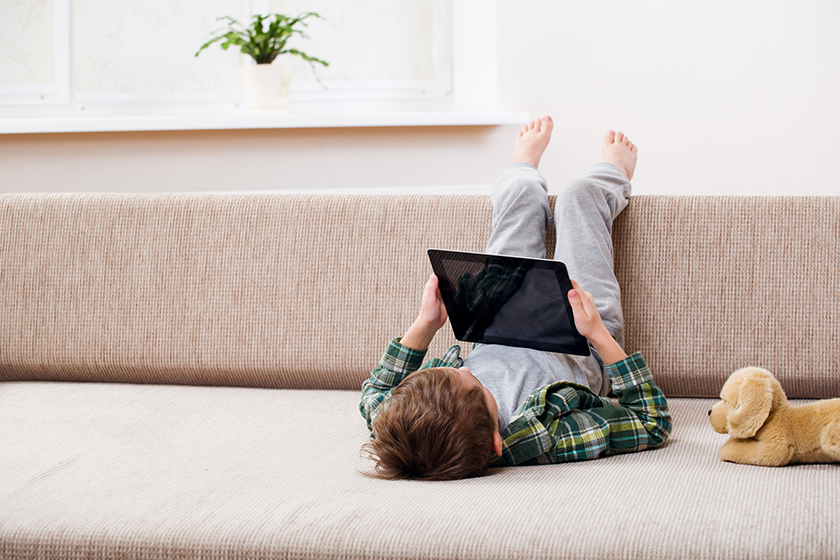How Can I Limit Screen Time at Home?
By
8 years ago
Parenting coach and author, Nöel Janis-Norton, advises parents on how to put the iPad back in its box

Are you worried that your child is spending too much time in front of screens? You may have tried unsuccessfully in the past to curb screen time, but don’t give up just yet. You don’t have to accept that this is just the way life is nowadays. Regaining control of the screens in your home is possible and worth the fight.

A positive, firm and consistent approach to screen time may seem hopelessly old fashioned. With all the different screens vying for your children’s attention, you may not really believe that you can reclaim your home as a largely screen-free environment. But with persistence and determination, you may well find you have a calmer, easier, happier family with less screen time. Other families have done it, and so can you.
Ten steps to reducing screen time
1. Stick to the rules you set
The first thing to do is to set up some screen time rules and routines which need to be clear, simple and easy to remember. It’s quite likely your children will be upset at first, and they may test you to see if the new rules will stick, but there are strategies which will boost cooperation. Descriptive praise motivates children to improve their behaviour and habits. Notice and describe any tiny improvements, for example, ‘You turned off the TV the first time I asked, with hardly any arguing. That took self-control’, or ‘I like how responsible you’re being. You’ve already fed the dogs and finished your homework. So now you’ve earned playing your computer game for an hour’.
2. Allow leisurely screen use only on certain days.
For many families it works to have Monday through to Thursday as screen-free days so that you can all concentrate on homework and family time in the evening.
3. Screen time has to be earned.
Require the daily tasks that your children or teens might try to avoid, rush through or forget about altogether, to be completed to your satisfaction before any screens can be switched on. This might include homework, reading, music practice, taking care of pets or helping with housework. This way you are making screen time a reward for small daily successes. In my new book, Calmer, Easier, Happier Screen Time, I give examples of several reward systems, and I explain in detail how to introduce them and put them into practice.
4. Children have to ask first before switching on a screen.
And make a rule for yourself that you will answer positively. Instead of ‘no’, you can say, ‘Yes, as soon as you show me your completed homework’ or ‘Yes, once your list is all ticked’.
5. Limit screen time during playdates at your house.
Not only is old fashioned playing better for their bodies and their brains, but it will improve their social skills in a way that spending time together in front of a screen will not.
6. No screens on school day mornings.
This will help children stay more alert and focused while they are getting ready for school and also once they are at school.
7. No screens on during meals.
Let’s keep the focus on enjoying the food and family bonding.
8. Get all electronics out of the bedrooms and into the public areas of the house.
This includes having children and teens charge their mobiles overnight in your bedroom.
9. Monitor access to screens in the home
If your children or teens are really fixated on screens, drastic measures may be called for. At first, you may need to keep all hand-held devices, remotes, chargers and dongles in your possession, except for when they have earned their screen time rewards.
10. Plan the week ahead
If getting your child to turn off screens is a problem, make a rule that in order to earn tomorrow’s screen time, they have to turn it off without any fuss today, as soon as they are told.



